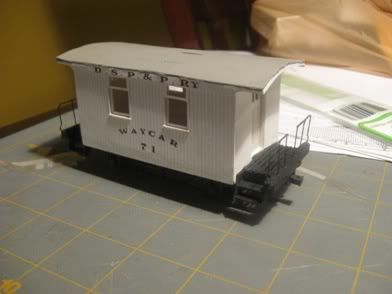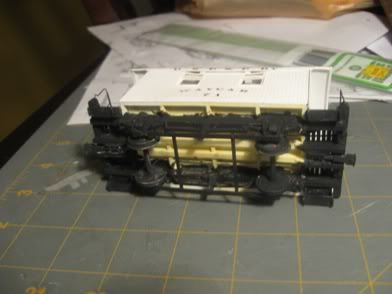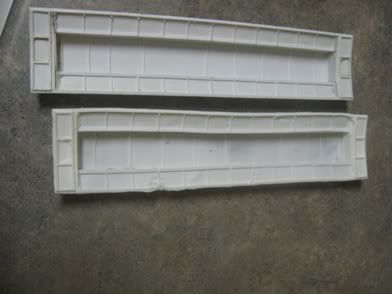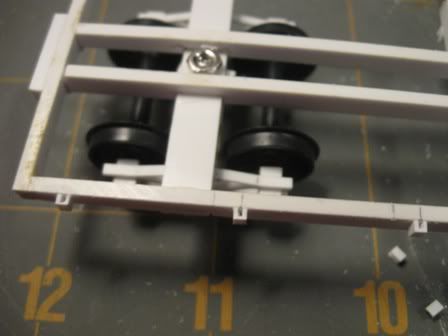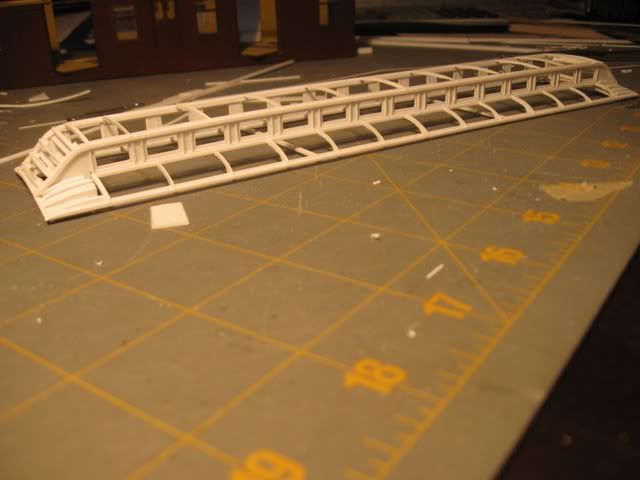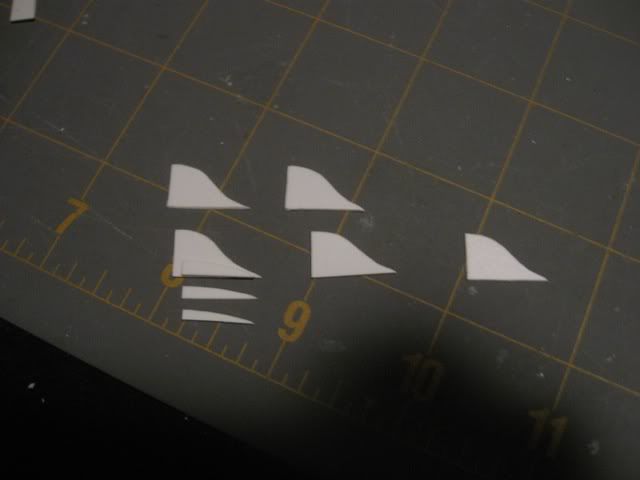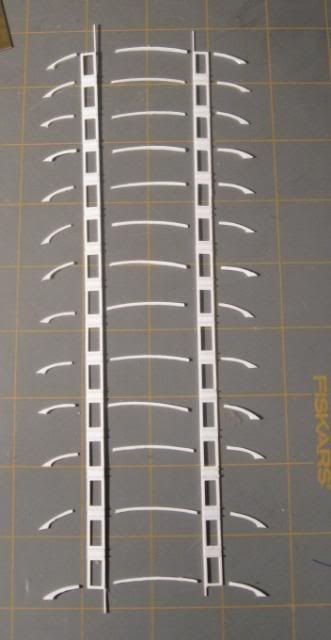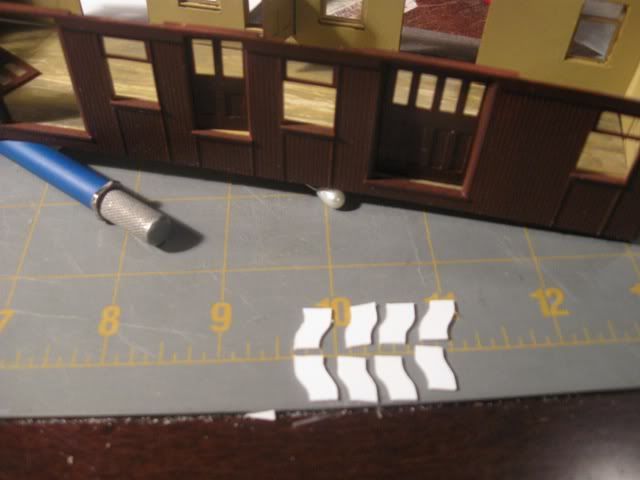
We had a great time at Train Festival.
Our weekend started with a drive up to visit my family on Thursday. My Grandmother was in the hospital (she's now out) and so we took the Liam in to see her. Once we got to my parents' house, I began ripping up all of the old HO yards and much of the old main...leaving just the branch line, coal mine, and an oval for continuous running below the branch.



All of the trackage I removed. Flex track on the right, turnouts on the left.
I also found the On3 switching layout I started back in high school...On3 in a 2'x4' space!

We then headed on to stay with them at the other house...two blocks from the Nickel Plate's Minster branch. The rail was dated 1913...so it actually predated the NKP's take over of the LE&W. My dad suggested that it is probably around 80# rail (it wasn't stamped, but I thought it was lighter than 90# rail).

We headed up and caught the Daylight at Alma, MI.

And I figured out where the photo run-bys were, and caught all three...


And then caught it once more after the run-bys...

I'd love to see the interior of this car:

And ride in this:

The following morning, dad and I caught the 765 before she departed Owosso...as she was covering for the ill 1225:

Based on the 1225 crew's response to their trouble, it sounds bad...as did what I've heard. Hopefully, once they've been able to get at the problem, it will be fixed in time for the rest of their season. Their website has been silent about it, which implies to me that they aren't confident enough to assert that she'll be ready, but they have enough hope not to cancel anything.
After the 765's departure, we caught the Little River pacific as her excursion passengers loaded...

Once inside the festival, we went straight to the back to see the Leviathan...a brand new replica of an 1868 4-4-0.

Nearby was the former Gettysburg RR 2-8-0.
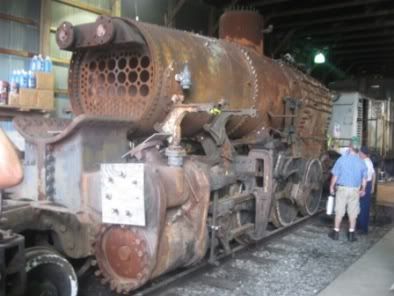
Her fellow GRR 4-6-2 was the engine that had the boiler explosion (NOT a catastrophic explosion) which prompted new FRA boiler rules and sidelined many perfectly good locomotives. It is worth noting that the rules wouldn't have done anything to prevent the gross operator error that caused the Gettysburg incident. I saw both this 2-8-0 as well as that 4-6-2 a few years ago near the Ohio Central's Morgan Run shops.
There was a Weaver NKP hudson on one of the display layouts...

I drooled over those when they came out. I love them.
And then the family arrived...

And we made a B-line to the 1/8th scale trains for a ride...



My brother's family
One of the live steam 1:32 railroads had an SP GS-4 operating near the real SP GS-4...

But the ultimate model at the show was this Southern PS-4...

It's whistle sounded incredible unlike most 1.5" scale locomotives.
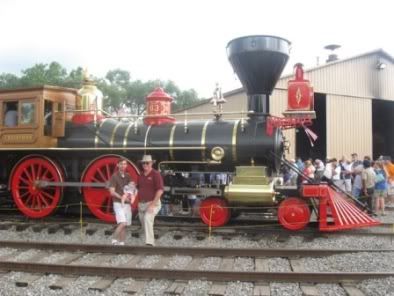
Three generations of railfans...




And my nephew enjoyed himself...


That Little River 4-6-2's tender carries 10 tons of coal and 4500 gallons of water...while the 765 is 22 tons and 22,000 gallons. So I'd guess that the 4-6-2 has a coal range of around 350 miles and a water range of less than 50 miles.
Sunday was an interesting day. We chased the 765 in the morning...

Then broke off the chase to ride the Huckleberry Railroad...

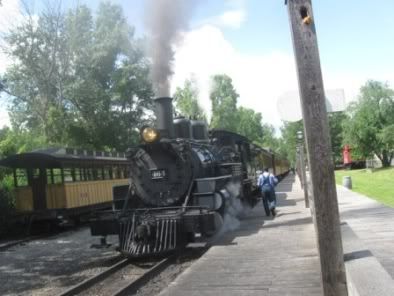
My brother's family rode the trip before us...


Liam loved it








That's ex-D&RGW coach #308 at their shops
And a Mexican 2-8-0...

Their primary power is the ex-D&RGW #464 (which has been immortalized by many models) and an Alaskan 4-6-0 #152. They also have a Quincy and Torch Lake 2-6-0 sitting behind their shops.
I had a wonderful time with the crew...it is an incredibly well run railroad...and loaded with excellent equipment. Their best piece (historically) is definitely their ex-NPC coach #8 which was built by Kimball in 1875...an extremely rare bird...and they do not use it for its protection. Their hospitality delayed our departure by an hour...but it was thoroughly worth it!
The delay caused us to reach Lima at dinner time...so we stopped at the Kewpee. Being so close to the NKP 779's home in Lincoln Park, we headed on over.

Much to my horror, I discovered a hole had been cut in the fence.

My father is one of the caretakers, and so I immediately had a park ranger dispatched and notified a caretaker whom brought over his keys. We then went in and found no damage or missing items. Suddenly, the delay which made us late to Huckleberry and the excellent time with the crew there made me very glad. The Lincoln Park event added another hour delay...but I couldn't leave until it was taken care of. The result was that Liam had a melt down for the last 45 minutes of our drive home...but I'm glad that the strange day happened as it did.
So, I saw 8 locomotives at Train Festival, 4 at Huckleberry, 1 at Durand, but the only locomotive I climbed into the cab of was the 779...which was under lock and key!


